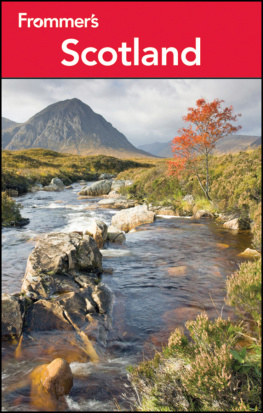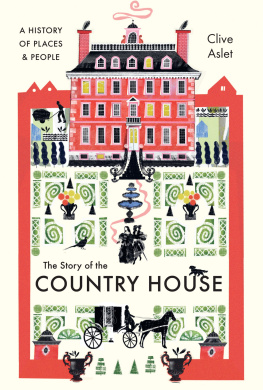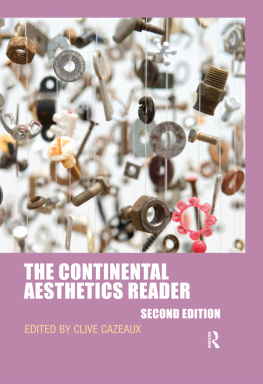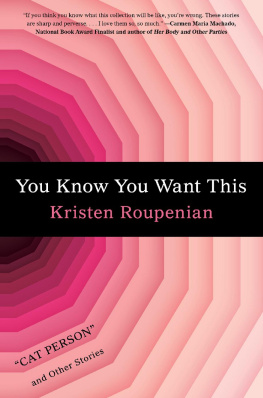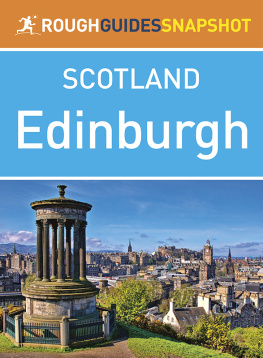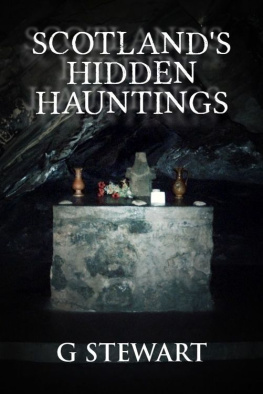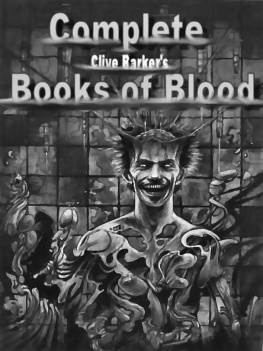Title Page
GHOST TRAILS OF EDINBURGH AND THE BORDERS
By
Clive Kristen
Publisher Information
Ghost Trails of Edinburgh and the Borders
Published in 2012 by Andrews UK Limited
www.andrewsuk.com
This book is sold subject to the condition that it shall not, by way of trade or otherwise, be lent, resold, hired out or otherwise circulated without the publishers prior written consent in any form of binding or cover other than that in which it is published, and without a similar condition being imposed on the subsequent purchaser.
Copyright 2012 Clive Kristen
The right of Clive Kristen to be identified as author of this book has been asserted in accordance with section 77 and 78 of the Copyrights Designs and Patents Act 1988.
Authors Note
If someone had drawn the line straight, my adopted county of Northumberland would have been in Scotland. And that is perhaps why I see The Borders as very much an extension of my own neck of the woods.
Many happy weekends have been spent crossing the border into foreign parts. The truth is that towns like Melrose, on the Tweed, are very similar to my own Rothbury, on the Coquet. The main difference is perhaps the regional accent.
The Borders, like Northumberland, is very much neglected by visitors. And long may it be so. They are both undiscovered jewels - full of character and interest. For ghost hunters they are perhaps equally spooktacular with a strong stamp of history and tradition.
But where the Northumbria includes the great cities of Newcastle and Durham, the Borders also has the capital of Scotland - Edinburgh - which almost deserves a ghostumentary of its own.
I tried, I really tried to put these so the reader could drive steadily from one to another. I failed. So I grouped them by proximity instead.
It has been a great privilege to enjoy Scots hospitality and the wonderful way the natives preserve their way of life. I hope the reader finds that this is a worthy addition to the catalogue of ghostly encounters.
Clive Kristen
Edinburgh
Than can be no finer capital in Europe than Edinburgh. My only criticism is the climate. You need a sturdy coat, woollen trousers, and a heavyweight bobble hat. In winter it is a good idea to add a couple of extra layers.
But it is worth it. The sense of history is everywhere and even the shopping has a friendly Scottish feel. There are highland dress shops and Scottish flavoured book shops and lots of places where you can buy a model Nessie.
***
A luckenbooth brooch is the classic Scottish jewellery. These brooches often feature a crown above one heart, or two intertwined hearts. They are typically made of silver and may be engraved or set with stones.
The name comes from the luckenbooths of Edinburgh where jewellery and trinkets used to be sold. Luckenbooth was a Scots word for a lockable stall or workshop. The Edinburgh booths were situated on the Royal Mile near St Giles Cathedral. They were the citys first permanent shops, dating back to the 15th century. Many housed silversmiths and goldsmiths. They were demolished in 1817.
The luckenbooth brooch became the traditional Scottish love token - often given as a betrothal or wedding present. It might be worn by a nursing mother as a charm to help her milk flow, or be pinned to a babys clothing to protect it from harm. It was sometimes known as a witch-brooch by those who used it to save children from the evil eye.
One legend of the luckenbooth brooch is that this symbol of love and devotion was given by Mary Queen of Scots to Lord Darnley. It is also claimed that a luckenbooth brooch was given to Mary by the Dauphin of France whom she was to marry.
In the early years of the 17th century James and Katherine Campbell were a devoted pair who wore luckenbooth brooches decorated with the thistle and each others names. James was a local lawyer and Katherine was the Edinburgh celebrity chef of her age. Their wealth brought them fine things including a famous four poster double bed with exquisite erotic carving on the headboard and posts.
They were the ideal married couple. But they were not married. They were a brother and sister who hailed from Dundee.
This may never have come to light but for the visit to Edinburgh of a man called MacLachlan who had been a school friend of Jamess. When he saw how his old friend was living he saw an opportunity for blackmail. James paid up for a while but came to realize that MacLachlan would not stop until he had impoverished him.
James went to Leith to find the solution to his problem. He thought he had hired two former sailors, a bit down on their luck, to be his assassins. But this was not quite true. MacInnes and Blair were slaughter men who had worked close to the dockyard providing rough cut salt meat for the merchant marine. At some point their lack of decorum and cruelty came to the attention of their employer. They were dismissed and lived on a little petty thievery. But now they had a new purpose.
They went to MacLachlans lodgings and gained entrance on the pretence of being friends of the Campbells bringing money.
The murder must have been horrific. Although MacInnes and Blair were contracted to kill, the method had not been discussed. But of course they had their own agenda.
They began by gagging and binding MacLachlan. Then they cut off parts of him - beginning with his ears and nose. Then they worked downwards. A finger or two were lopped and MacLachlan expired hopefully at some time before they clipped away at his genitals.
It was the nature of the murder, rather than the fact of it, that outraged the city. The men had been seen leaving the lodgings. One of them had a great deal of blood on his sleeve. The witness description was thorough. Then more people came forward, including a woman from Leith who had been serving at table when James passed a great deal of money to the sailors. The net was beginning to close.
A constable, John Maynard, was commanded to oversee the investigation. He was very thorough. When MacLachlans Dundee connection became known he pursued it. When it became clear that MacLachlan and James Campbell had a connection, further enquiries were made. At that time the true relationship between James and Katherine then became clear.
Then something incongruous happened. James and Katherine may have been tipped off as to the danger they were in. They quit Edinburgh and went to St. Andrews but then they returned. It is as if they were determined to face down the investigation together.
MacInnes and Blair had already been taken. The widely circulated descriptions and the money that they were spending brought attention to them. Then they beat up a lady of the night and bragged about it openly.
But there was still no hard evidence against them as killers. That was before they came into the care of Romeo ( or Romario ) Del Rey - a professional torturer who proudly traced his heritage back to his forebears at the Spanish Inquisition.
MacInnes and Blair did not last long with the attentions of Del Rey. Within 24 hours he had their confessions. James and Katherine were arrested the following morning.
To expedite matters swiftly Del Rey determined that Katherine should be beaten and raped within Jamess hearing. He would do this with the active cooperation of his two assistants. This method of acquiring evidence is rather frowned upon in Scotland today but it was effective. After less than an hour James confessed to everything. And the end of the story from there should have been predictable.
But the next day MacInnes and Blair were found dead in their cell. Their bulging eyeballs, blackened tongues and marks around their necks indicated that they had been garrotted. Suspicion fell on Del Rey but it is unlikely that he had sanctioned their deaths. He knew the importance of them giving their evidence.
Next page

